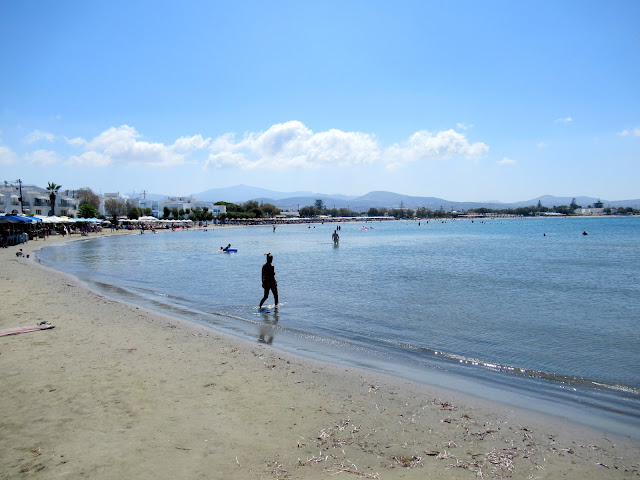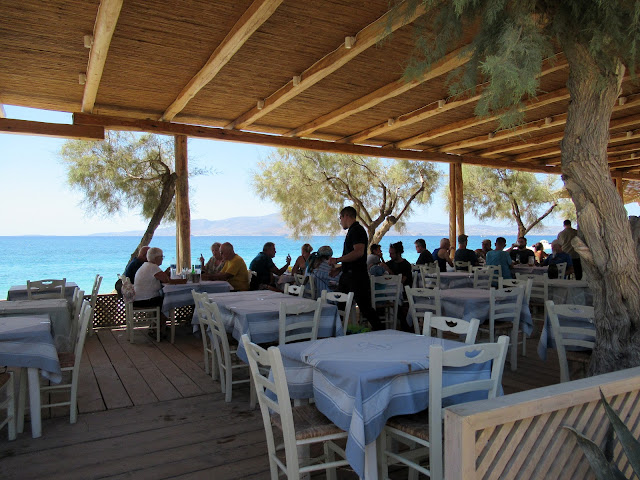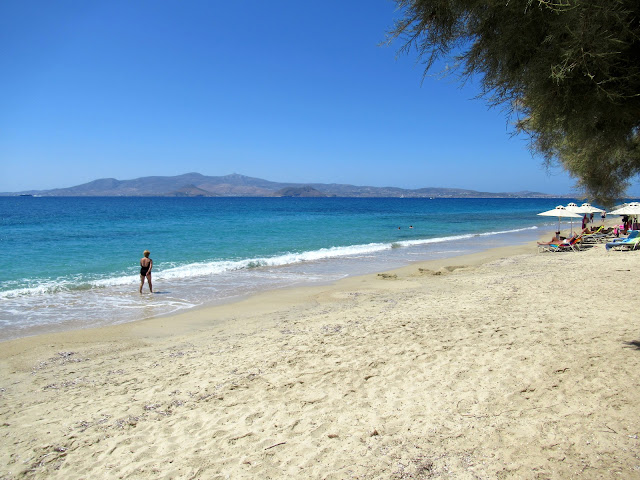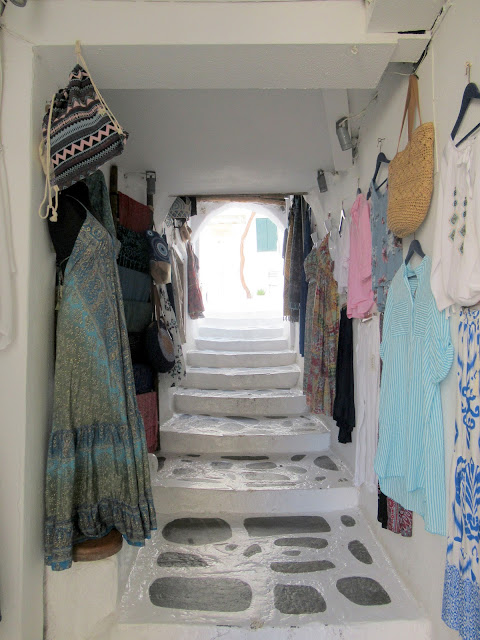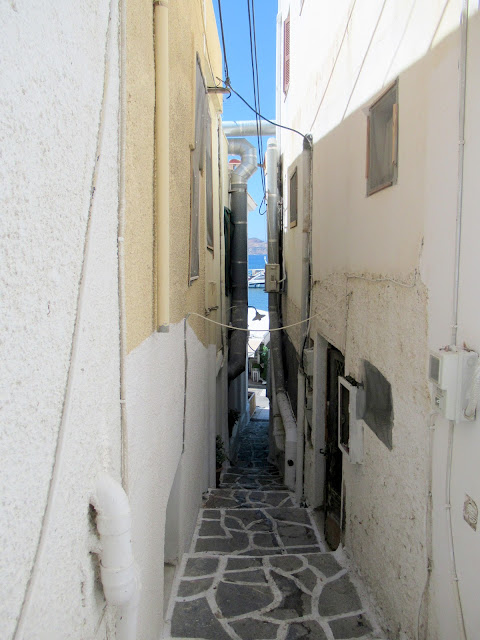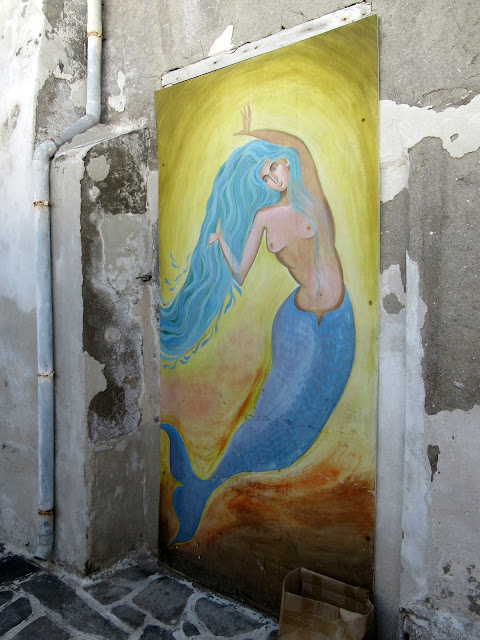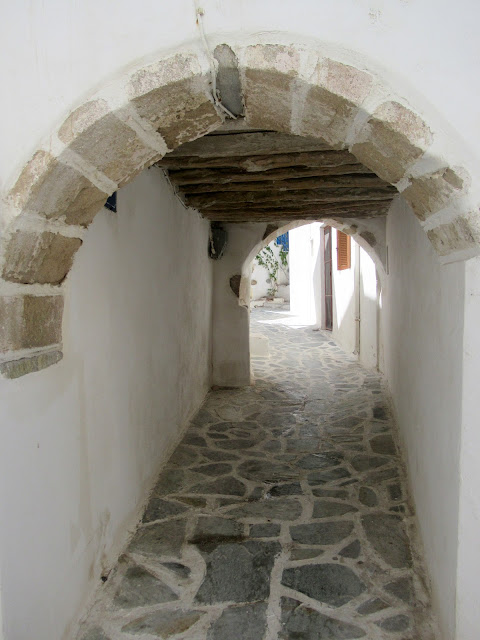lie on our lounger and then go back in again, and so on. It's an organised beach, and this is what we like, primarily because I want shade, I never sit in the sun (Ken does though).

On the day we visited Plaka beach, the bus deposited us here - this is the road, even though it's covered in sand.
We stayed where the bus had dropped us off for a while, but then we decided to explore before settling down. So, we took our stuff and started walking
and walking, and walking... and this is what it was like for ages
This beach is also a nudist beach. There are patches where the majority of the bathers are nude, and some where they are mostly wearing bathing suits.
After walking for quite a while, we found a spot that we liked and stayed there for the rest of the morning. The swimming was very good and lying on our lounger listening to the waves lapping the shore was most enjoyable.
Naxos is known for its beautiful beaches, and everyone we spoke to urged us to go and explore as many as we could. We had every intention of doing so, but then, as I said in a previous post we had lots of plans but did very little in the end, except relax. This beach was a ten-minute walk from our hotel, and the tavernas here were very good, so, with the exception of one trip to Plaka beach, we came here everyday, and loved it.
There was an abandoned restaurant up on this hillock, a ruin, the only eyesore in the whole area.

Three tavernas on this beach, next to each other, the tables on the sand, and a lot of us ate in our bathing suits.
We sampled all three and then found our favourite and continued going there for the rest of our stay.
You can see how close you are to the water.
Five kilometres of sandy white stretch, Plaka is the longest beach in Naxos. It is also the most secluded. There are a few small hotels and apartments that cater to locals
and there are many sections on the beach that have umbrellas and loungers but it is not difficult to find long stretches which are quiet allowing you to relax in solitude.
It's this untouched quality, together with the fine, white sand and the crystal clear blue waters that make it such a wonderful place to be.
When we started getting hungry we got on to the sand road again, looking for somewhere to eat. We had been told that there are some very good tavernas in Plaka, so it was a question of finding one.
We found a good table, right at the front
so that we could enjoy the excellent view
